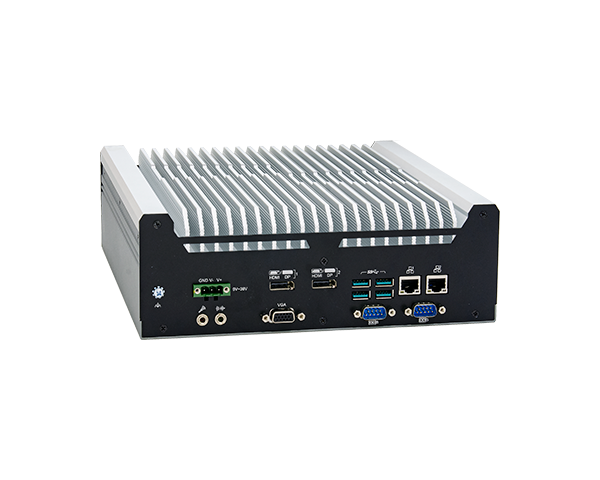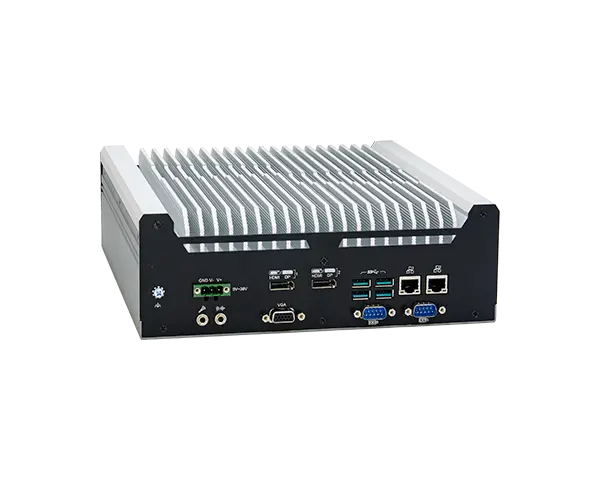What is a Fanless Embedded PC?


Are you tired of bulky, noisy computers that take up valuable space and disrupt the tranquility of your environment? Say goodbye to annoying fan noises and overheating issues with the revolutionary technology of fanless embedded pc! These compact powerhouses are taking the computing world by storm, providing a silent and efficient solution for industrial automation, home theaters, and countless other applications. In this blog post, we will dive deep into what exactly a fanless embedded pc is, explore its benefits, and unleash its potential to transform your computing experience. Get ready to discover a whole new level of productivity without any unwanted noise – let’s explore the exciting world of fanless embedded PCs together!
Contents [show]
The Evolution of Fanless Embedded PCs
Embedded PCs have undergone a significant evolution, transitioning from designs with built-in fans to fanless configurations. This shift was driven by the need for silent operation in noise-sensitive environments and the desire for improved reliability and longevity, as fans are prone to maintenance issues and failures over time. Fanless embedded PCs also benefit from advanced thermal management through passive cooling methods like heat sinks and heat pipes.
The progress in processor technology, characterized by lower power consumption and sustained high performance, has been instrumental in enabling fanless designs. This has allowed the creation of compact yet powerful devices without relying on noisy and maintenance-intensive fans. Fanless embedded PCs have found widespread applications in various industries, including industrial automation, digital signage, and smart home solutions, where reliable, silent operation is essential.
Choosing the right fanless embedded pc involves considering factors such as processing power, connectivity options, environmental conditions, form factors, and compliance certifications. In conclusion, the evolution of fanless embedded PCs represents a transformative leap in compact computing, delivering silent operation, enhanced reliability, and efficient thermal management to meet the diverse needs of different industries.
Advantages and Disadvantages of Fanless Embedded PCs
When considering embedded PCs, it’s essential to understand the pros and cons of fanless designs:
Advantages
- Silent Operation: Fanless embedded PCs operate silently, making them suitable for noise-sensitive environments like hospitals or libraries.
- Increased Reliability: Their absence of fans reduces the risk of mechanical failure due to dust or other issues, leading to improved longevity and lower maintenance costs.
- Compact and Lightweight: Fanless PCs are often more compact and lightweight, making them ideal for space-constrained or portable applications.
Disadvantages
- Heat Buildup: Fanless PCs rely on passive cooling methods, potentially leading to heat buildup, especially in high-performance or poorly ventilated environments.
- Limited Processing Power: The absence of active cooling may restrict their processing power, limiting their capacity for high-intensity tasks like gaming or video editing.
When choosing between fanless and fan-equipped embedded PCs, carefully consider your specific requirements and preferences, weighing the benefits of silent operation and reliability against potential heat-related concerns.
Common Uses for Fanless Embedded PCs
Fanless embedded PCs are gaining popularity in various industries due to their compact size, durability, and efficient cooling. They excel in applications like:
- Industrial Automation: These rugged devices manage manufacturing processes, equipment monitoring, and data collection in harsh environments without requiring constant maintenance.
- Transportation: Fanless embedded PCs control communication systems, passenger displays, ticketing, and surveillance in vehicles without dust interference.
- Healthcare: They’re used in medical imaging and patient monitoring systems, ensuring silent operation for accurate diagnosis and real-time data analysis.
- Retail: Compact fanless PCs are ideal for POS systems in space-limited retail settings, offering efficient processing power for quick transactions.
- Digital Signage: Fanless embedded PCs drive multiple displays in sectors like hospitality and malls without noise or overheating issues.
Their reliability and optimal performance in demanding conditions make fanless embedded PCs versatile solutions across various industries.
Factors to Consider When Choosing a Fanless Embedded PC
When deciding on a fanless embedded pc, several key factors merit consideration. Foremost is the device’s processing power; it should align with the demands of your applications and tasks.
- The form factor of the embedded PC is equally important. Contemplate where and how you intend to use it, as this dictates the most suitable size and shape. Limited space may prompt selecting a smaller form factor that seamlessly integrates into existing systems.
- Take into account connectivity options. Identify the necessary ports and interfaces for seamless connections with peripherals. There are USB ports, Ethernet ports, HDMI or VGA outputs, and wireless options such as Wi-Fi or Bluetooth.
- Make sure the embedded PC is rugged and durable, especially if it operates in harsh conditions. Opt for a fanless embedded pc explicitly designed to endure high temperatures, humidity, dust, or vibrations.
- Consider power consumption as well. Choosing a low-power device not only reduces energy costs but also ensures efficient operation without the overheating risks associated with fan-based systems.
- Remember to think about scalability and future-proofing. Opt for an embedded PC with expansion capabilities, allowing it to adapt to evolving needs without necessitating complete system replacements.
By meticulously weighing these considerations in your choice of a fanless embedded pc solution, you can guarantee optimal performance and longevity while meeting your specific requirements.
Maintenance and Upkeep of Fanless Embedded PCs
Ensuring the longevity and optimal performance of fanless embedded PCs is essential. Despite their design to operate without cooling fans, these devices still demand regular maintenance to prevent overheating and potential issues.
- An important aspect of upkeep involves keeping the fanless embedded pc free from dust and debris. Without a fan, particles can easily accumulate on internal components, impeding airflow and causing temperature spikes. Regularly using compressed air or a soft brush to remove build-up is crucial to prevent such issues.
- Monitoring the device’s temperature is another vital maintenance step. Fanless PCs often feature built-in sensors for real-time CPU temperature monitoring. Regular checks of these readings enable the early identification of abnormal temperature increases, allowing for timely intervention to prevent damage.
- Proper ventilation around the fanless embedded pc is important, as these computers rely on passive cooling methods like heat sinks or heat pipes. Placing the PC in well-ventilated areas with ample airflow facilitates efficient heat dissipation.
- Regular software updates are key for maintaining security and performance levels. Manufacturers frequently release firmware updates addressing vulnerabilities and enhancing system stability. Keeping the device up-to-date ensures the benefits of these improvements while minimizing potential security risks.
- Periodically inspecting cables and connections is necessary to avoid connectivity issues or loose connections that could impact overall performance. Regular checks for signs of wear or damage allow for early problem identification and prompt resolution.
Consistently following these maintenance practices can significantly extend the lifespan of your fanless embedded pc while maximizing its efficiency and reliability.
Conclusion: Is a Fanless Embedded PC Right for You?
In conclusion, fanless embedded PCs stand out for their compact, noise-free design, offering notable advantages in reliability, durability, and energy efficiency. Technological advancements have broadened their performance capabilities, making them versatile across various industries. Choosing the right fanless embedded pc involves careful consideration of environmental factors, computing power requirements, space limitations, and budget constraints.
These devices shine in noise-sensitive and rugged settings, delivering efficient performance and effective thermal management. However, applications with high-end graphics or intense computational demands may necessitate exploring alternatives with active cooling systems. Fanless embedded PCs provide benefits such as noise reduction and heightened reliability, making them well-suited for applications in industrial automation, digital signage, and transportation. Ensure a tailored choice based on specific needs before embracing this innovative technology.
Also Read: Unveiling the Power of Web Scraping: How It Revolutionizes Data Collection




